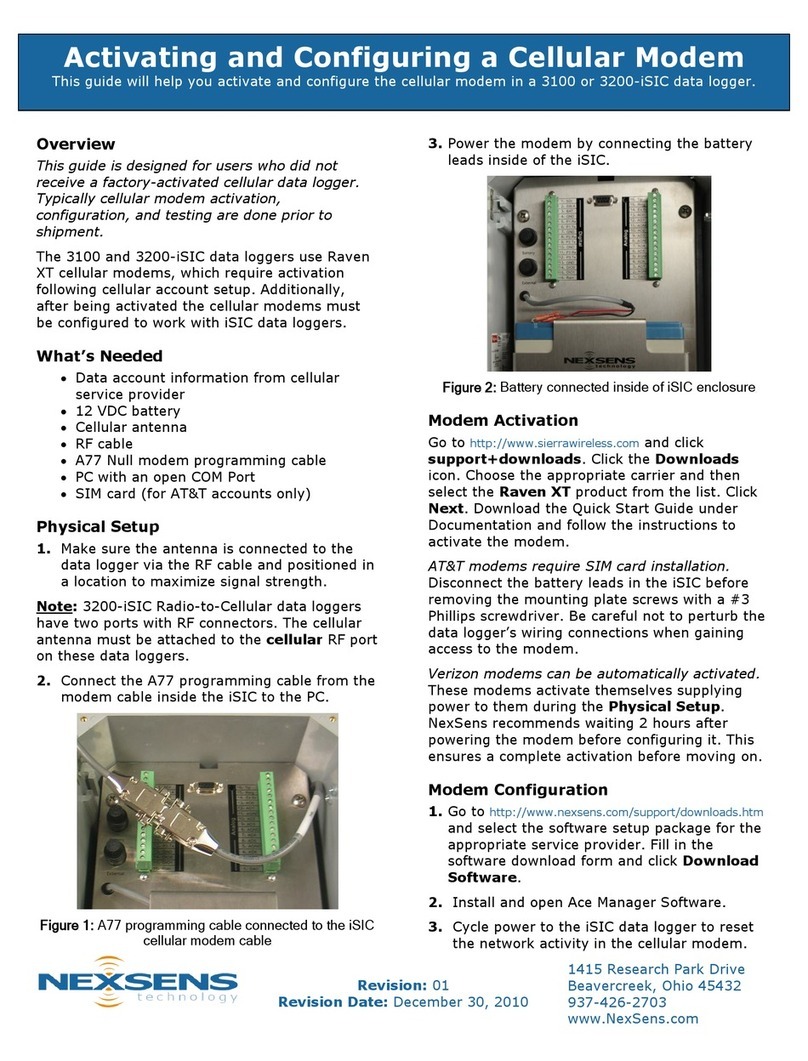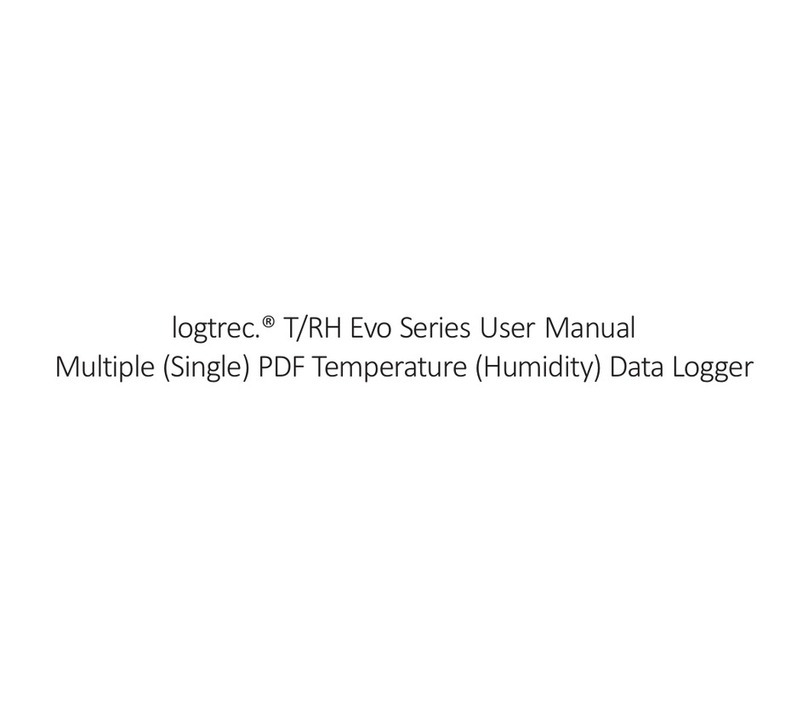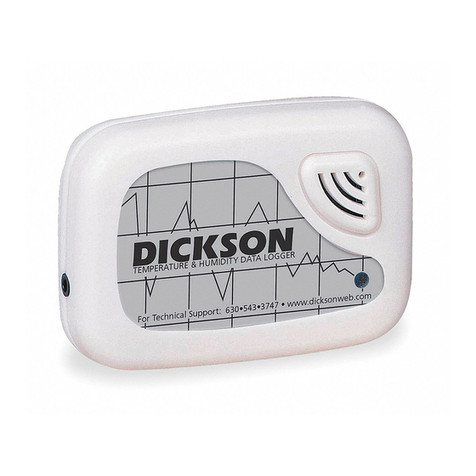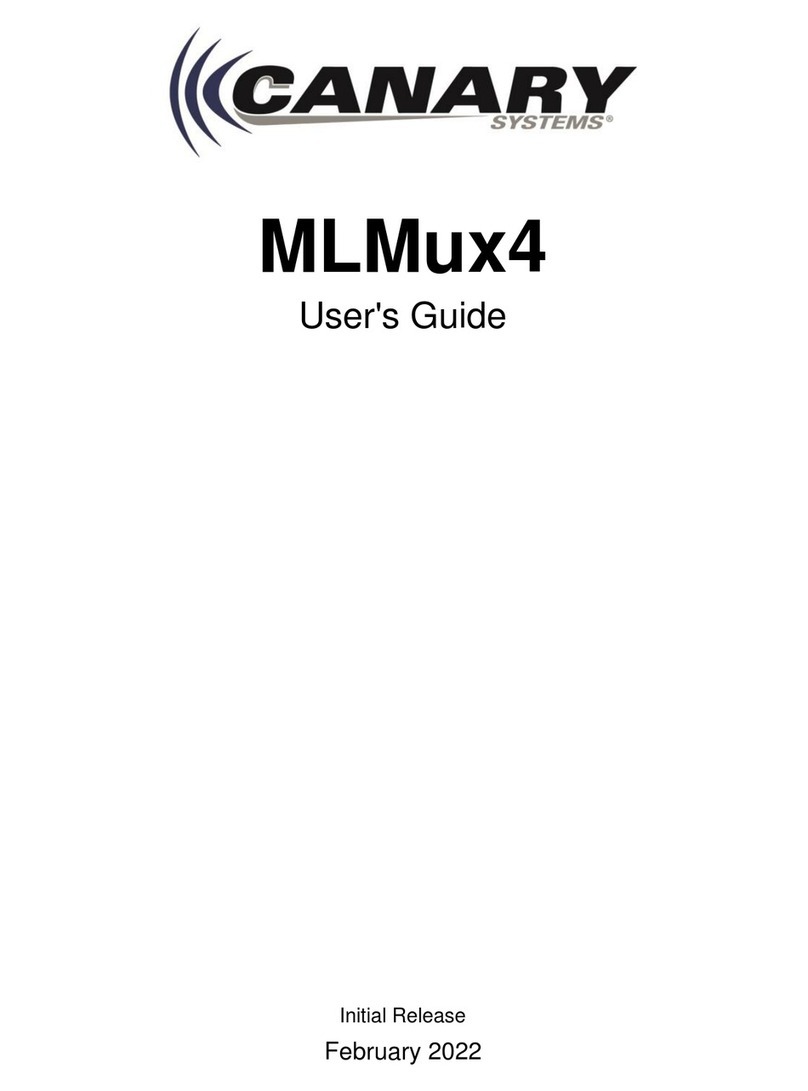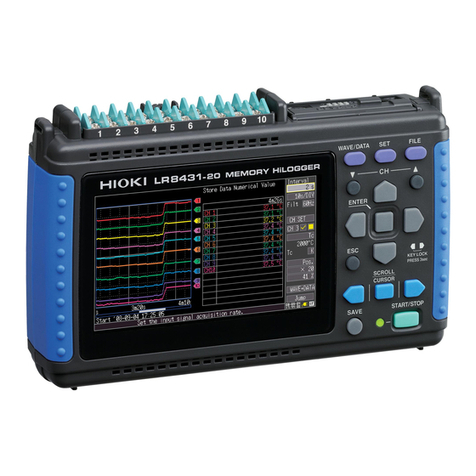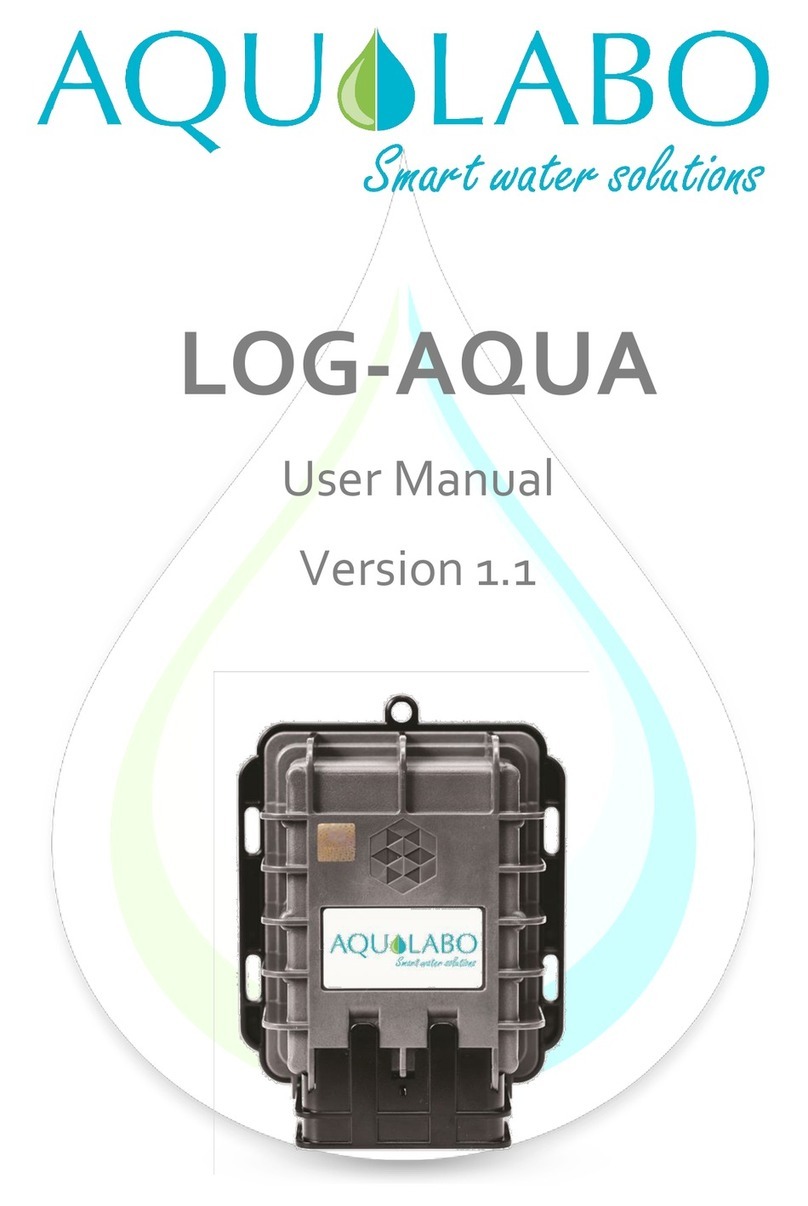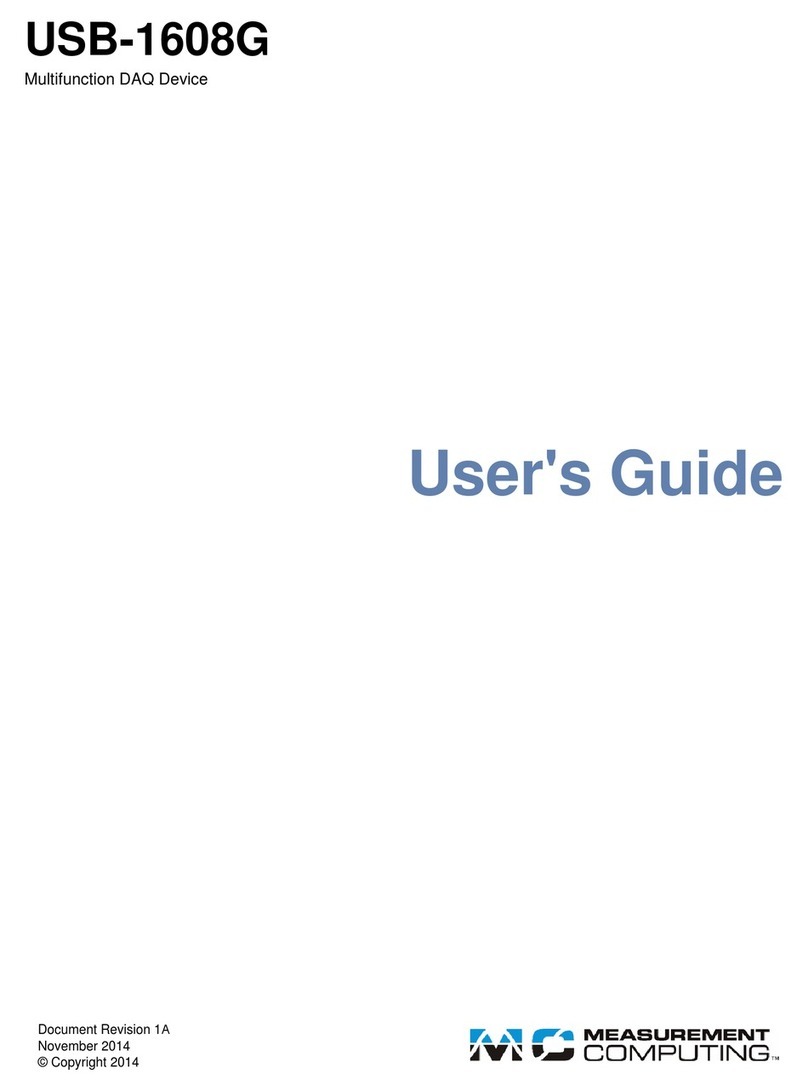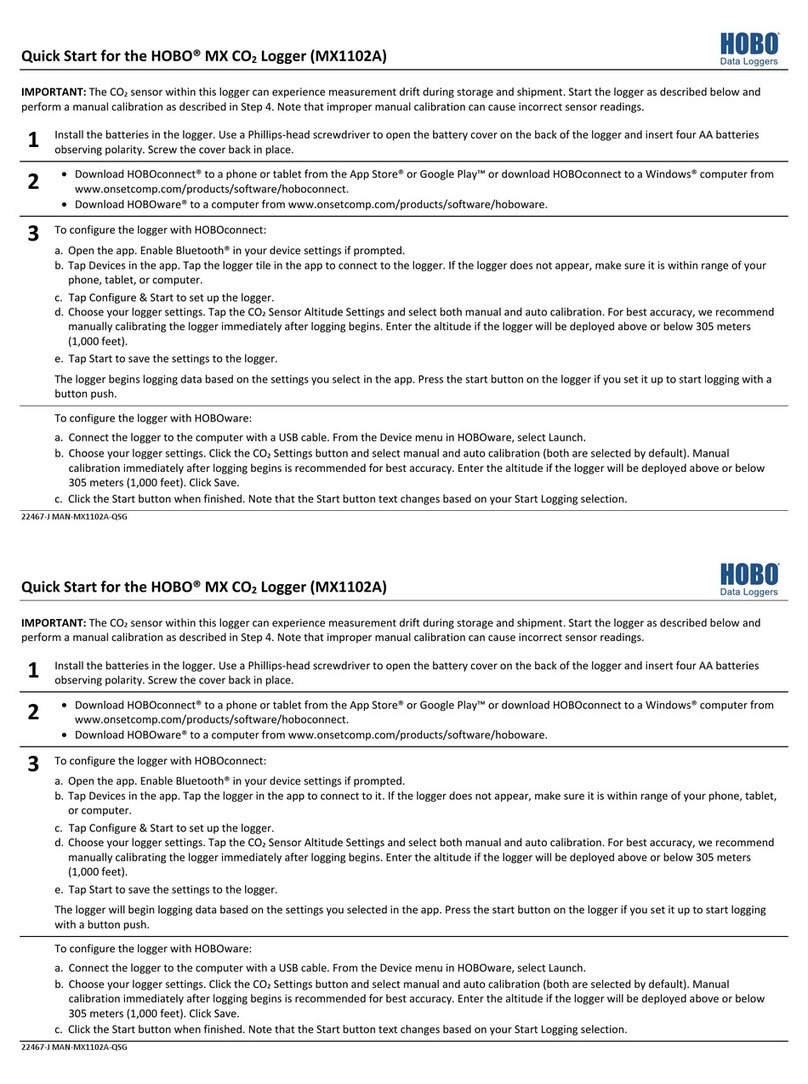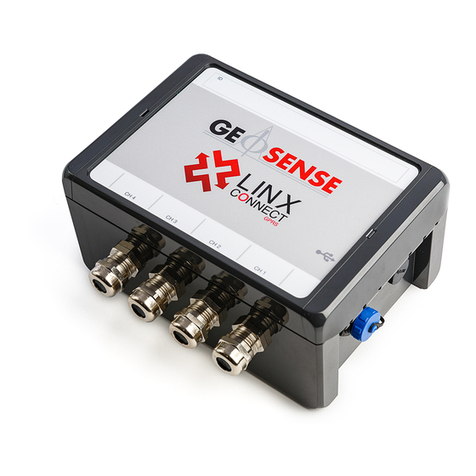DIEBOLD AccuVote-OS Installation instructions

AccuVote-OS
AccuVote-OS
Hardware Guide
Revision 2.0
August 21, 2002

© Diebold Election Systems, Inc. 2002 AccuVote-OS Hardware Guideii
Copyright
AccuVote-OS Hardware Guide
Copyright © Diebold Election Systems, Inc. and Diebold Election Systems Inc., 2002
This documentation contains proprietary, trade secret information and is the property of Diebold
Election Systems, Inc. and/or Diebold Elections Systems Inc. The information contained herein
may not be disclosed, used, transferred or copied, in whole or in part, without the express prior
written consent of Diebold Election Systems, Inc. and/or Diebold Elections Systems Inc.
Diebold Election Systems Inc.
1611 Wilmeth Road
McKinney, Texas
USA 750610-8250
Diebold Election Systems Inc.
1200 W. 73rd Street, Suite 350
Vancouver, B.C.
Canada V6P 3G5
Disclaimer
Any product and related material disclosed herein are only furnished pursuant and subject
to the terms and conditions of a duly executed license or agreement to purchase or lease
equipment. The only warranties made by Diebold Election Systems, Inc., and/or Diebold Election
Systems Inc. if any, with respect to the products described are set forth in such license or
agreement. Neither Diebold Election Systems, Inc., nor Diebold Election Systems, Inc. accepts
any financial or other responsibility that may result from your use of the information in this
document or software material, including direct, indirect, special, or consequential damages. You
should be very careful to ensure that the use of this information and/or software material compiles
with the laws, rules, and regulations of the jurisdictions with respect to which it is used. The
information contained herein is subject to change without notice.
Part number: 733-2311

© Diebold Election Systems, Inc. 2002 AccuVote-OS Hardware Guideiii
Document History
Document Number Date Remarks
August 21, 2002 Updated document to Diebold
Election Systems Product
Document Standard 1.0.

© Diebold Election Systems, Inc. 2002 AccuVote-OS Hardware Guideiv
Table of Contents
1. Introduction.............................................................................................................................. 1
1.1. Who this Guide is for ................................................................................................. 1
1.2. Overview ................................................................................................................... 1
1.3. Other documents....................................................................................................... 1
2. AccuVote-OS Hardware .......................................................................................................... 3
2.1. Product environment ................................................................................................. 3
2.2. Looking at the AccuVote-OS ..................................................................................... 3
2.3. Inside the AccuVote-OS............................................................................................ 5
2.4. Ballot Reader............................................................................................................. 5
2.5. CPU Board ................................................................................................................ 6
2.6. Read Only Memory (ROM)........................................................................................ 6
2.7. Random Access Memory (RAM)............................................................................... 6
2.8. Memory card Interface .............................................................................................. 6
2.9. Liquid Crystal Display (LCD) ..................................................................................... 7
2.10. Printer........................................................................................................................ 7
2.11. Power Supply and Battery......................................................................................... 7
2.12. Modems..................................................................................................................... 8
3. How the Unit Works................................................................................................................. 9
3.1. Inside the AccuVote-OS............................................................................................ 9
3.2. Ballot reader electronics............................................................................................ 9
3.2.1. Scanning the timing marks ............................................................................ 10
3.2.2. White levels ................................................................................................... 10
3.2.3. Powering the visible light emitters ................................................................. 10
3.2.4. Ballot reader to CPU transmission ................................................................ 10
3.3. Ballot reader motor.................................................................................................. 11
3.4. Reader DMA interface............................................................................................. 11
3.5. Power supply........................................................................................................... 11
3.5.1. Battery ........................................................................................................... 12
3.6. V25 CPU ................................................................................................................. 12
3.6.1. Devices on the CPU ...................................................................................... 12
3.7. ROM memory .......................................................................................................... 13
3.8. RAM memory .......................................................................................................... 13
3.9. 32KB/64KB/128KB memory card interface ............................................................. 13
3.10. LCD module interface.............................................................................................. 14
3.11. Printer interface ....................................................................................................... 14

© Diebold Election Systems, Inc. 2002 AccuVote-OS Hardware Guidev
3.12. RS232 serial interface............................................................................................. 14
3.13. Ballot deflector......................................................................................................... 14
3.14. Modems................................................................................................................... 14
4. How the Software Works....................................................................................................... 16
4.1. Power-on modes ..................................................................................................... 16
4.2. Pre-Election Mode................................................................................................... 16
4.3. Election Mode.......................................................................................................... 17
4.3.1. Count Ballots module .................................................................................... 17
4.3.2. Separating ballots into the alternate ballot box compartment ....................... 17
4.3.3. Closing the polls on the AccuVote-OS .......................................................... 17
4.4. Post-Election Mode ................................................................................................. 18
4.4.1. Auditing the memory card ............................................................................. 18
4.4.2. Transmitting election results to the host computer........................................ 18
4.4.3. Supervisor Functions..................................................................................... 18
4.5. Communications protocol........................................................................................ 18
5. Memory cards........................................................................................................................ 20
5.1. Care......................................................................................................................... 20
5.2. Sealing memory cards and AccuVote-OS units...................................................... 21
5.3. Write-Protection....................................................................................................... 21
6. Ballot Box .............................................................................................................................. 22
6.1. Locating the Ballot Box............................................................................................ 22
6.2. Stabilizing the Ballot Box......................................................................................... 22
6.3. Ballot Box Lid .......................................................................................................... 22
6.4. Security Plate .......................................................................................................... 23
6.5. Ballot Box Compartments ....................................................................................... 24
6.6. Inside the Ballot Box................................................................................................ 24
6.7. Separating Ballots in the Ballot Box ........................................................................ 25
6.8. Removing Ballots from the Ballot Box..................................................................... 26
6.9. Replacing a Full Ballot Box ..................................................................................... 26
7. Setting Up the AccuVote-OS................................................................................................. 28
7.1. Setting up the AccuVote-OS to Program memory cards ........................................ 28
7.2. Setting up the AccuVote-OS for Ballot Processing ................................................. 29
7.3. Setting up the AccuVote-OS on Election Day......................................................... 30
7.4. Opening the Election on the AccuVote-OS............................................................. 30
7.5. Closing the Polls on Election Day ........................................................................... 31
8. Modem transmission ............................................................................................................. 32
8.1. Programming a memory card.................................................................................. 32

© Diebold Election Systems, Inc. 2002 AccuVote-OS Hardware Guidevi
8.2. Transmitting Election Results.................................................................................. 32
8.3. Supplies................................................................................................................... 32
8.4. AccuVote-OS Modems............................................................................................ 32
8.5. Setting Up Host Computer Modems ....................................................................... 33
8.6. Multiple Serial Port Cards........................................................................................ 34
8.7. Election Central ....................................................................................................... 34
8.8. Telephone Lines...................................................................................................... 35
8.8.1. Cascading Lines ............................................................................................ 35
8.8.2. Single Lines ................................................................................................... 35
8.8.3. Switches ........................................................................................................ 35
8.9. Polling Places.......................................................................................................... 35
8.9.1. AccuVote-OS units ........................................................................................ 35
8.9.2. Poll Workers .................................................................................................. 36
8.10. Special Services...................................................................................................... 36
8.11. Security.................................................................................................................... 36
9. Pre-Election Maintenance ..................................................................................................... 37
9.1. Pre-Election maintenance activities ........................................................................ 37
9.2. Printer Paper ........................................................................................................... 37
9.2.1. Removing the Paper Roll............................................................................... 37
9.2.2. Installing the Paper Roll................................................................................. 38
9.3. Printer Ribbon ......................................................................................................... 38
9.3.1. Removing the Printer Ribbon ........................................................................ 38
9.3.2. Installing the Printer Ribbon .......................................................................... 38
9.4. Battery ..................................................................................................................... 39
9.4.1. Recommended Battery Test.......................................................................... 39
9.4.2. Power Fail...................................................................................................... 40
9.4.3. Low battery .................................................................................................... 40
9.4.4. Removing the Battery .................................................................................... 41
9.4.5. Installing the Battery ...................................................................................... 41
9.5. Replacing the memory card battery ........................................................................ 42
9.5.1. Blank memory card........................................................................................ 42
9.5.2. Programmed memory card............................................................................ 42
9.6. Storage.................................................................................................................... 42
10. Equipment Maintenance and Repair ..................................................................................... 43
10.1. Election maintenance .............................................................................................. 43
10.1.1. Pre-Election Maintenance ............................................................................. 43
10.1.2. Election day ................................................................................................... 43

© Diebold Election Systems, Inc. 2002 AccuVote-OS Hardware Guidevii
10.2. Post-election Maintenance...................................................................................... 44
10.3. Repair...................................................................................................................... 44
10.3.1. Removing the cover....................................................................................... 45
10.3.2. Replacing the cover....................................................................................... 45
10.3.3. Removing the card reader assembly............................................................. 46
10.4. Installing the card reader assembly ........................................................................ 46
10.5. Removing the CPU board ....................................................................................... 47
10.6. Installing the CPU board ......................................................................................... 48
10.7. Removing the battery .............................................................................................. 49
10.8. Installing the battery ................................................................................................ 51
10.9. Removing the power supply.................................................................................... 51
10.10. Installing the power supply...................................................................................... 52
10.11. Removing the LCD module ..................................................................................... 53
10.12. Installing the LCD module ....................................................................................... 53
10.13. Removing the printer............................................................................................... 53
10.14. Installing the printer ................................................................................................. 54
10.15. Removing the ROM chips ....................................................................................... 54
10.16. Installing the ROM chips ......................................................................................... 55
10.17. Removing the RAM chips........................................................................................ 55
10.18. Installing the RAM chips.......................................................................................... 55
10.19. Removing the SmartWatch ROM chip .................................................................... 56
10.20. Installing the SmartWatch ROM chip ...................................................................... 56
10.21. Removing the modem ............................................................................................. 56
10.22. Installing the modem ............................................................................................... 57
10.23. Removing the ballot deflector.................................................................................. 58
10.24. Installing the ballot deflector.................................................................................... 58
10.25. Removing the ballot deflector motor ....................................................................... 59
10.26. Installing the ballot deflector motor ......................................................................... 60
10.27. Removing the ballot deflector cable ........................................................................ 60
10.28. Installing the ballot deflector cable .......................................................................... 61
11. Points to Remember..............................................................................................................62
12. Parts List................................................................................................................................ 63
12.1. AccuVote-OS unit parts list ..................................................................................... 63
12.2. Ballot box unit parts list ........................................................................................... 65
13. Unit Specifications ................................................................................................................. 67
13.1. Mechanical .............................................................................................................. 67
13.2. Electrical.................................................................................................................. 67

© Diebold Election Systems, Inc. 2002 AccuVote-OS Hardware Guideviii
13.3. Communications...................................................................................................... 67
13.4. External connections ............................................................................................... 67
13.5. Operating environment............................................................................................ 67
13.6. Storage environment ............................................................................................... 68
13.7. Transportation environment .................................................................................... 68
13.8. Ballot cards.............................................................................................................. 68
Appendix A: Glossary..................................................................................................................... 69
Appendix B: AccuVote-OS Inventory and Maintenance Logs ...................................................... 73
Appendix C: Ballot Box Inventory and Maintenance Logs............................................................. 75
Appendix D: Modem Transmission Checklist ............................................................................... 77
Appendix E: ROM Labels.............................................................................................................. 79
Appendix F: RS-232 Pin Definitions.............................................................................................. 80
13.9. Adapter cable .......................................................................................................... 81

© Diebold Election Systems, Inc. 2002 AccuVote-OS Hardware Guideix
Table of Figures
Figure 3-1. AccuVote-OS External Features .................................................................................. 4
Figure 3-2. AccuVote-OS Internal Features ................................................................................... 5
Figure 3-3. AccuVote-OS Battery ................................................................................................... 7
Figure 3-4. Modem.......................................................................................................................... 8
Figure 4-1: The AccuVote-OS.......................................................................................................... 9
Figure 4-2: Battery ......................................................................................................................... 12
Figure 6-1. memory card............................................................................................................... 20
Figure 6-2. Write-Protect Switch on memory card ........................................................................ 21
Figure 7-1: Ballot Box Lid.............................................................................................................. 23
Figure 7-2: Inside the Ballot Box................................................................................................... 25
Figure 7-3: Separating Ballots in the Ballot Box ........................................................................... 26
Figure 7-4: Unlocking and Opening the Ballot Box Lid ................................................................. 27
Figure 8-1. Rear View of AccuVote-OS Unit................................................................................. 28
Figure 8-2: AccuVote-OS Ballot Processing Unit ......................................................................... 29
Figure 8-3: Internal View of AccuVote-OS .................................................................................... 31
Figure 9-1: AccuVote-OS Modems ............................................................................................... 33
Figure 9-2: Front of Modem .......................................................................................................... 34
Figure 9-3: Back of Modem........................................................................................................... 34
Figure 10-1: AccuVote-OS Battery Terminals .............................................................................. 41
Figure 11-1: The AccuVote-OS...................................................................................................... 45
Figure 11-2: Battery terminals........................................................................................................ 50
Figure 11-3: Battery compartment ................................................................................................. 50


Introduction
© Diebold Election Systems, Inc. 2002 AccuVote-OS Hardware Guide1
1. Introduction
1.1. Who this Guide is for
The AccuVote-OS Hardware Guide is designed for election administrators, service technicians, or
any AccuVote-OS user who needs to install or replace AccuVote-OS components. The guide
may be used in conjunction with the AccuVote-OS Precinct Count User’s Guide.
1.2. Overview
The AccuVote-OS provides an efficient and flexible solution to diverse election needs. Each
AccuVote-OS unit is relatively compact, weighing 15 lbs. only and may be easily installed and
detached from ballot boxes at the polling place. Modular AccuVote-OS construction provides for
easy upgrading and replacement of consumable parts such as the printer ribbon and paper tape.
The AccuVote-OS optically scans paper ballots, maintaining a running tally on its memory card
until an AccuVote-OS Ender card is processed at election close. This card electronically locks
the unit and automatically generates a report of the vote center’s election results. Absentee
ballots may optionally be counted after polling ballots at each precinct. Additional results reports
can be printed on the AccuVote-OS once the election has been closed.
A variety of ballot counting solutions are available using the AccuVote-OS. Ballots may be
counted either at the precinct on Election Day, or as absentee, challenged or early voting ballots.
Each of these counting categories may be integrated into precinct and summary election results
in a number of ways, using either precinct count equipment, or by manually entering results in the
GEMS software.
Memory cards are used in conjunction with precinct count AccuVote-OS units and provide a
highly compact and portable medium for storing election results, whereby any memory card may
be used with any AccuVote-OS and at any polling place. Memory cards may easily be set to one
of three election modes, with additional supportive setup and diagnostic modes.
The AccuVote-OS memory card is initially programmed with all vote center and ballot information.
The memory card is loaded with the vote center’s election results while ballots are counted.
Election results may be transmitted to election central via modem. GEMS provides current
consolidated election results and statistics, both online and in printed form as results are
received.
Ballots counted on polling AccuVote-OS units automatically drop into one of two compartments in
the ballot box, depending on the ballot selection criteria specified in GEMS. The AccuVote-OS is
sealed into the ballot box on election day and all ballot box compartments are locked.
Extensive security is employed, be it in the encryption of data transmission at the time of memory
card programming or at the time of election results transmission to the host computer. Critical
AccuVote-OS functions are protected by password entry, and audit logs may be printed at any
point in time, detailing all activities performed on a memory card since the point of programming.
Battery backup means hours of problem-free operation on election day in case of power failure.
Furthermore, memory cards and AccuVote-OS units may be easily replaced without
compromising the integrity and security of election results in case of equipment failure.
1.3. Other documents
Product documents also offered by Diebold Election Systems, Inc. include:
• AccuFeed User’s Guide

Introduction
© Diebold Election Systems, Inc. 2002 AccuVote-OS Hardware Guide2
AccuVote-HS Central Count User’s Guide
AccuVote-OS Central Count User’s Guide
• AccuVote-OS Precinct Count User’s Guide
• AccuVote-TS R6 Hardware Guide
• Ballot Station User’s Guide
• Election Media Processor Hardware Guide
• Election Media Processor User’s Guide
• GEMS System Administrator’s Guide
• GEMS User’s Guide
• Voter Card Encoder User’s Guide
• VCProgrammer User’s Guide

AccuVote-OS Hardware
© Diebold Election Systems, Inc. 2002 AccuVote-OS Hardware Guide3
2. AccuVote-OS Hardware
The AccuVote-OS ballot-processing unit is used to count ballots and tally the results either onto a
memory card or dynamically update the GEMS database the host computer in the case of central
count. Polling machines may send results to the host computer either by means of a direct serial
connection or by modem.
The AccuVote-OS measures 14” by 16” by 3” and weighs 15 lbs. AccuVote-OS instructions and
messages are displayed on a 2 by 16 character LCD. The thread of processing is established
using the Yes and No buttons located underneath the LCD. Memory card labels, Zero Total,
Election Results, and Audit reports are printed on the AccuVote-OS printer.
The AccuVote-OS ballot card reader is currently designed to process ballots using visible light
sensors - earlier versions of the AccuVote-OS use infrared light emitting diodes to read ballots.
The visible light card reader consists of two sets of printed circuit boards for reading both sides of
the ballot card.
The AccuVote-OS accepts 8½” by 11”, 14”, 17, or 18” ballots, in any one of four orientations.
Detailed specifications regarding weight, dimensions, color, tolerances, positioning of control
marks, etc. is included in the Ballot Specifications Guide.
2.1. Product environment
Hardware used in conjunction with the AccuVote-OS may include:
• GEMS host computer
• Optional port expansion device (i.e. a DigiBoard), attached to the host computer
• Optionally, intelligent port server for port expansion functionality
• One modem for each serial port being used for modem transmission
• Cabling necessary for memory card programming and election results transmission
• Power cabling necessary for AccuVote-OS units, modems and any other electronic
equipment
• Ballot box for each AccuVote-OS unit
• One or more AccuFeeds for processing large volumes of absentee or mail-in ballots
• Control cards, including AccuVote Ender cards and Diagnostic ballots, and optionally
Absentee Count cards and Precinct Header cards
• Ballot box and AccuVote-OS keys
2.2. Looking at the AccuVote-OS
Figure 2-1 provides a detailed, exterior view of the AccuVote-OS ballot-processing unit.

AccuVote-OS Hardware
© Diebold Election Systems, Inc. 2002 AccuVote-OS Hardware Guide4
Figure 2-1. AccuVote-OS External Features
Printer Lid
The printer lid covers the printer compartment, which contains the printer, printer ribbon, battery
and paper roll.
LCD
The LCD displays all of the system’s messages and prompts.
Card Reader
The ballot reader processes varying sized ballots, both sides being simultaneously read by visible
light sensors, in any one of four orientations. The voting positions read on each ballot are
transmitted to the CPU by means of the card reader serial interface.
Deflector Plug
The ballot deflector plug allows the AccuVote-OS to electronically control the ballot deflector in
the ballot box or, with a special adapter, to electronically control an AccuFeed.
Side Screws
The side screws and rear screws keep the top and bottom of the unit locked together. The side
screws are located inside a horizontal groove in the casing into which the guide rails slide when
the unit is installed in the ballot box.
AC Plug
The power cord plugs into the AC receptacle.
Main Serial Port
The main serial port is used for direct memory card programming and direct results transmission
to the host computer.
Line
The Line jack is used for remote memory card programming and election results transmission by
modem.

AccuVote-OS Hardware
© Diebold Election Systems, Inc. 2002 AccuVote-OS Hardware Guide5
Phone
The Phone jack is used to attach a standard telephone to assist in manual dialing when the onsite
phone system doesn’t allow automatic -this jack should be left covered, as it is not commonly
used.
2.3. Inside the AccuVote-OS
The AccuVote-OS ballot-processing unit consists of the following components, as illustrated in
Figure 2-2:
• Ballot reader
• CPU board
• Read Only Memory (ROM)
• Random Access Memory (RAM)
• Memory card interface
• Liquid Crystal Display (LCD)
• Printer and printer ribbon
• battery and power supply
• Paper roll
• Optional modem.
•
Figure 2-2. AccuVote-OS Internal Features
2.4. Ballot Reader
The ballot reader processes ballots 8½" wide and either 11", 14", 17”, or 18" in length. Both
ballot sides are read simultaneously by either visible light or infrared sensors, depending on the
generation of technology, in any one of four orientations. The optical scanner in the ballot reader
comprises several printed circuit boards on each side, which scan 34 columns on each ballot

AccuVote-OS Hardware
© Diebold Election Systems, Inc. 2002 AccuVote-OS Hardware Guide6
side. All voting marks are aligned with these columns, which are indicated by diagnostic marks at
the top and ballot card ID marks at the bottom of ballots.
Ballots are drawn through the ballot reader assembly by means of a rubber pinch-roller drive
system.
2.5. CPU Board
The AccuVote-OS is run with an NEC V-25 single chip microcomputer, which is used primarily to
control the peripheral devices, analyze ballot data, update memory card totals, and print reports.
Information gathered by the ballot reader is transferred to the CPU’s Direct Memory Access
(DMA) channel by means of a high-speed serial input connection.
The CPU board includes the following:
• Ballot reader interface
• CPU
• RAM chips
• ROM chips
• memory card interface
• Serial ports
• Ballot box deflector controller
• AccuFeed ballot feeder controller
2.6. Read Only Memory (ROM)
Each AccuVote-OS is operated by the program stored on ROM chips. AccuVote-OS units use
either one or two ROM chips depending on the function of the program or the size of the ROM
chips. ROM chips provide memory independent of power supply - the information on ROM chips
can not be altered. Note that all information concerning a jurisdiction, election, and ballots is
stored on the memory card, and not on the ROM chips.
Firmware upgrades are reflected by ROM release numbers
AccuVote-OS units must be loaded with the same version ROMs for programming memory cards
as for transmitting election results to the host computer, otherwise election results will be rejected
on transmission to the host computer.
2.7. Random Access Memory (RAM)
Two Random Access Memory (RAM) chips provide CPU with dynamic memory for storing
temporary results of program execution and other variables prior to final results being stored on
the memory card.
The RAM chip installed in both RAM slots is usually 128KB. The firmware is designed to
recognize either a 32KB, 64KB or 128KB chip in either slot.
2.8. Memory card Interface
The memory card interface acts as a receptacle for memory cards. A memory card has 40
terminals. These terminals fit into the interface’s 40-pin socket.

AccuVote-OS Hardware
© Diebold Election Systems, Inc. 2002 AccuVote-OS Hardware Guide7
2.9. Liquid Crystal Display (LCD)
The AccuVote-OS features a 2 by 16 character LCD unit, which is used to display messages and
prompts in each of a memory card’s election modes as well as diagnostic and setup information.
LCD prompts are synchronized with responses provided on the AccuVote-OS Yes and No
buttons.
2.10. Printer
Each AccuVote-OS contains a light-weight EPSON dot matrix printer controlled directly by the
CPU, which prints information 24 characters per line on 2¼” wide paper. Both the ink cartridge
and paper roll are easily replaceable - refer to the section Pre-Election Maintenance in Chapter
24: Maintenance for more information. The reports generated by the AccuVote-OS are standard,
although it is possible to customize reports using AccuBasic.
When the printer is not in use:
• Paper may be pulled out of the printer in a forward direction only
• The manual knob on the paper feed mechanism may be rotated to feed the printer paper
either forward or backward.
Note: Never attempt to turn the manual knob on the paper feed mechanism when the printer is in
operation.
2.11. Power Supply and Battery
Power is drawn from a power supply, which is in turn used as a source for all electronic
components of the AccuVote-OS, as well as functioning as a battery backup. Visible light units
are installed with switching power supplies and infrared units are installed with linear power
supplies.
Before every election, each AccuVote-OS should be connected to AC power by means of a
power cord and left on overnight. This will ensure that the AccuVote-OS battery is sufficiently
charged and will operate in the event of a power failure. Testing the battery for sufficient charge
is described in section 24.4 Battery.
Figure 2-3. AccuVote-OS Battery

AccuVote-OS Hardware
© Diebold Election Systems, Inc. 2002 AccuVote-OS Hardware Guide8
2.12. Modems
AccuVote-OS modem allows memory card programming and election results transmission to the
host computer by modem. The AccuVote-OS modem is displayed in Figure 2-4.
The modem is connected to the CPU board with a serial connector. Power is supplied by means
of a connection to the CPU board, which is in turn connected to the power supply. The Line and
Phone jacks at the rear of the AccuVote-OS are connected to the modem by means of RJ-11
connector cables. Line is used to connect the modem to a phone line - the Phone jack may be
optionally used to connect the modem to a telephone handset, although normally it is not used
and should a dummy phone plug installed
Figure 2-4. Modem
Each modem is pocket-sized, transmits data at a rate of 2400 baud, and weighs approximately
four ounces. Modems are set to transmit a full 8-bit ASCII character set by default.
For more information on modems, refer to Appendix D: Modem Transmission.

HowtheUnitWorks
© Diebold Election Systems, Inc. 2002 AccuVote-OS Hardware Guide9
3. How the Unit Works
This section provides a detailed look at the AccuVote-OS and its components.
3.1. Inside the AccuVote-OS
Figure 3-1: The AccuVote-OS
The AccuVote-OS ballot processing unit consists of the following components, as illustrated in
Figure 4-1:
• ballot reader
• CPU board
• Read Only Memory (ROM)
• Random Access Memory (RAM)
• memory card interface
• Liquid Crystal Display (LCD)
• printer
• power supply
• optional modem
3.2. Ballot reader electronics
The ballot reader processes ballots 8½” wide and either 11”, 14” 17” or 18” in length. Both ballot
sides are read simultaneously by visible light sensors, in either one of two orientations. The
electronic circuitry of the ballot reader comprises two sets of printed circuit boards, one set above
the moving ballot and the other set below. The two sets of circuit board are identical except for
connectors and motor drive circuitry on the lower circuit board.
The boards on each side of the reader scan thirty-four columns on each ballot side. All voting
marks are aligned with these columns. The column positions are indicated by diagnostic marks

HowtheUnitWorks
© Diebold Election Systems, Inc. 2002 AccuVote-OS Hardware Guide10
at the top of the ballots and ballot card ID marks at the bottom of ballots. Ballots are drawn
through the ballot reader assembly by means of a rubber pinch-roller drive system.
The ballot reader is connected by a twenty-conductor ribbon cable to the CPU board’s P20.
Control, status, and data signals are sent along this cable. The ballot reader is powered by a
three wire cable from the power supply. This provides a 5 volt DC logic supply and a 14 volt DC
motor supply.
3.2.1. Scanning the timing marks
The columns on each ballot card are spaced ¼” on-center, and the two outside columns carry
only timing marks, while the thirty-two inside columns carry all potential voting positions.
The scanning of each timing mark and voting mark position is done using visible light emitting
diodes and silicon photodiodes in a special configuration which monitors the diffuse reflectance of
the ballot surface. The red-orange emitters are Aluminum Indium Gallium Phosphide (AlInGaP)
and have a peak wavelength of 621 nanometers.
The optical elements are placed behind a quartz rod lens that concentrates the illumination and
detection along the scan direction of the ballot. The quartz rod lense also serves as a dust shield
to minimize the collection of paper dust on the optical sensors.
3.2.2. White levels
Each voting channel establishes a reflectance reference level during the first ¼” of ballot travel
under each side of the sensor. This calibration is accomplished by measuring the leading edge
reflectance of the ballot. The reference level is stored for each voting channel. As the ballot is
scanned, the reflectance is measured and compared to a threshold percentage of the reference
level. Areas of the ballot with reflectance below the threshold are reported as a logic high in the
data sequence.
3.2.3. Powering the visible light emitters
The visible emitter portions of the reflective sensors are powered by a multiplexed constant
current source to provide a reliable and power efficient illumination source. The voting channel
emitters are energized one at a time only when a ballot is being scanned.
3.2.4. Ballot reader to CPU transmission
The data derived from the scanning of the columns of voting marks are transmitted to the CPU
board in serial fashion:
• six ID bits for the upper reader board
• the left hand timing bit from the upper reader board
• thirty-two voting bits (left to right) of the upper board
• the right-hand timing bit from the upper reader board
• six ID bits for the lower reader board
• the left hand timing bit from the lower reader board
• thirty-two voting bits (left to right) of the lower board
• the right-hand timing bit from the lower reader board
In the data sequence given above, it is important to note that the two sides of the ballot are read
in opposite directions, in the normal visual sense of reading a ballot. Even though both reader
boards scan from left to right, the left side of the upper reader board is looking at the visual left
Table of contents
Popular Data Logger manuals by other brands
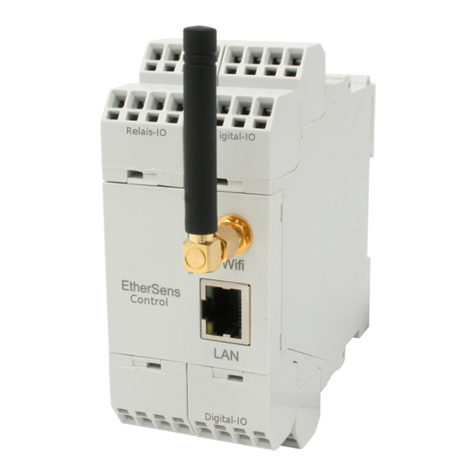
process-informatik
process-informatik EtherSens Energy Handling-Short Instruction
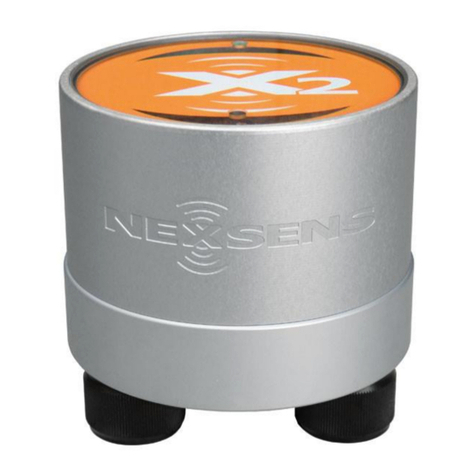
NexSens
NexSens X2 quick start guide
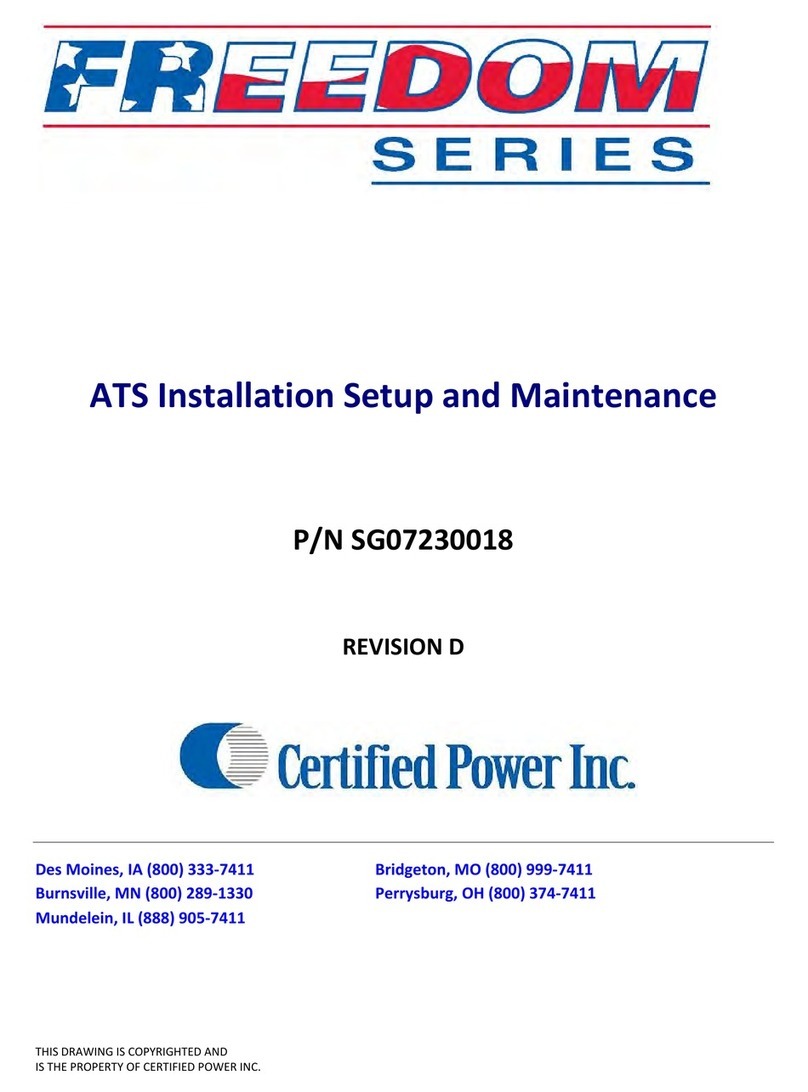
Certified Power
Certified Power Freedom ATS Installation Setup and Maintenance
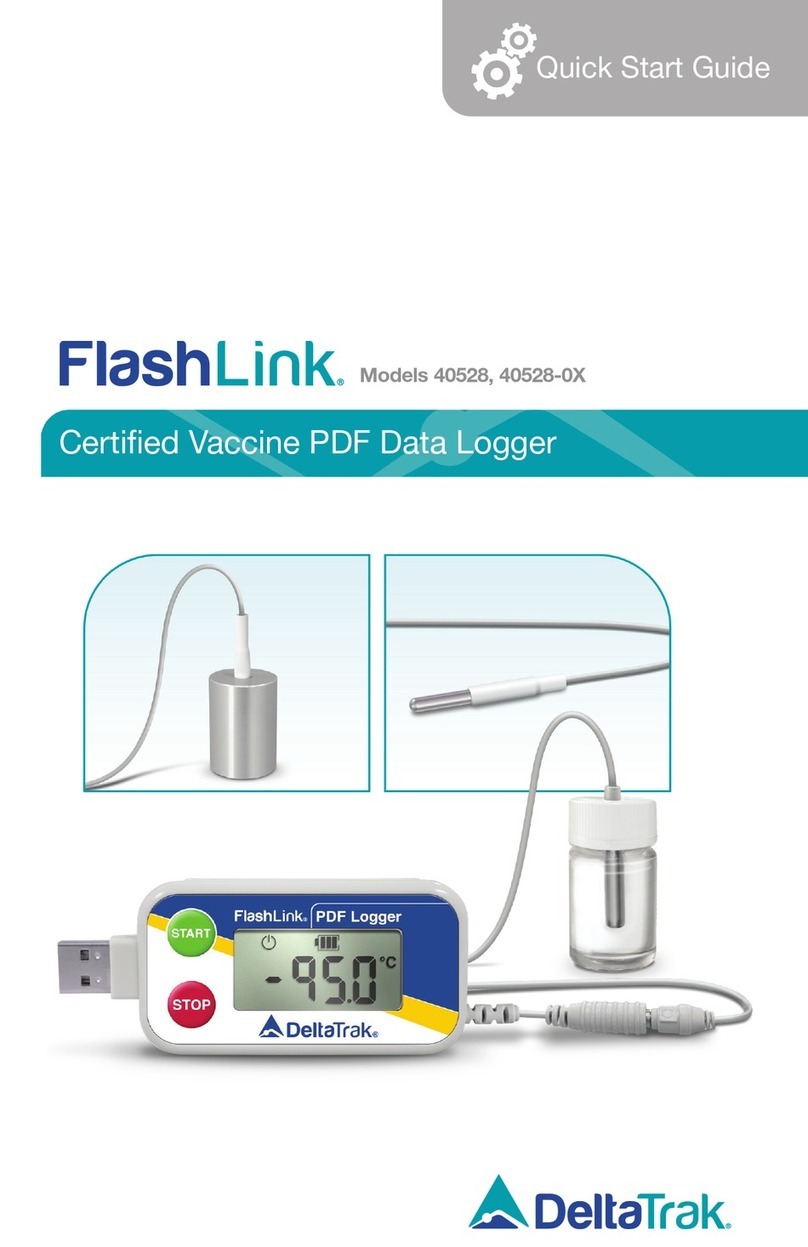
DeltaTRAK
DeltaTRAK FlashLink 40528 quick start guide

NOVAK
NOVAK DATA LOGGER instruction manual
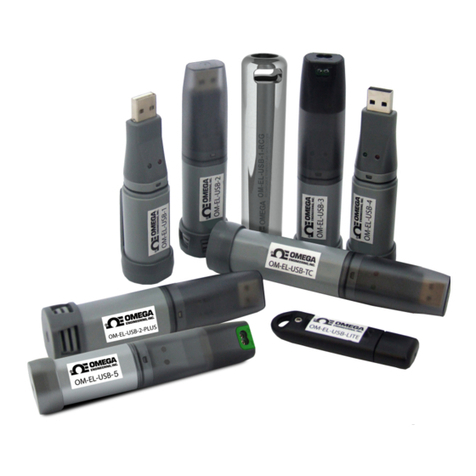
Omega
Omega OM-EL-WIN-USB Operation guide
